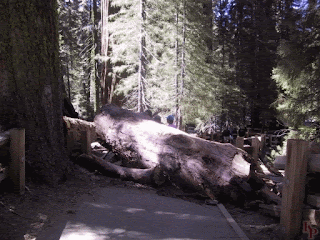How quickly are glaciers in Antarctica melting? Researchers are launching javelin-shaped devices out of airplanes to help answer that question and find out what's going on in some of the frozen continent's most inaccessible places.
So far, scientists have deployed about 25 of these GPS-equipped javelins in Antarctica's Pine Island Glacier, and another four on the Antarctic Peninsula, said Hilmar Gudmundsson, a researcher at the British Antarctic Survey (BAS). The javelins will automatically record and relay their positions for two to three years, allowing researchers to figure out how quickly the glacier is flowing into the ocean. Preliminary measurements show that the Pine Island Glacier's march to the sea is speeding up, Gudmundsson told OurAmazingPlanet.
ANALYSIS: Pine Island Glacier Primed to Break
The Pine Island Glacier is thinning faster than any other glacier in Antarctica, and it's important to find out why and exactly how fast, Gudmundsson said. By some estimates, this glacier alone could be responsible for about 5 percent of global sea level rise, although that is a rough calculation and varies by year, he added.
The javelins are designed to only partially embed into the ice, so that they are still able to communicate with satellites. To that end the devices are equipped with small parachutes and "ice brake" fins to keep them from disappearing beneath the ice sheet when they crash land, Gudmundsson said.
Like many glaciers in polar regions, the Pine Island Glacier's expanse of ice doesn't stop when it reaches the ocean. Instead, the ice flows into the sea, where it floats atop the water, forming a platform of ice called an ice shelf. Measurements have shown that the Antarctic Ocean is warmer than it used to be, and is melting the bottom of this ice shelf. That produces less resistance for the glacier on land, which, as a result, slides toward the ocean faster than before, Gudmundsson said.
And behind the Pine Island Glacier is an even larger section of the West Antarctic Ice Sheet, one of the largest in the world. The glacier acts like a plug in a leaky dam, and if it collapses, it could have devastating consequences for global sea levels, he added.
ANALYSIS: Where's the Melt Factor in Antarctica?
The javelins Gudmundsson and his team have deployed allow researchers to measure areas, like this one, that are difficult to access over land. "This opens up new possibilities. We can instrument areas that were previously out of reach," he said. "These data will give us a clear picture of what's going on but will also give us a valuable data set to test our (computer) models."
More from LiveScience:
- Album: Stunning Photos of Antarctic Ice
- Antarctica: 100 Years of Exploration (Infographic)
- Antarctica's Pine Island Glacier Is Rifting | Video
This article originally appeared on LiveScience. Copyright 2013 LiveScience, a TechMediaNetwork company. All rights reserved. This material may not be published, broadcast, rewritten or redistributed.

.jpg)






















